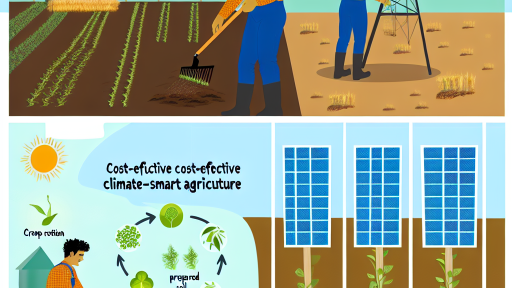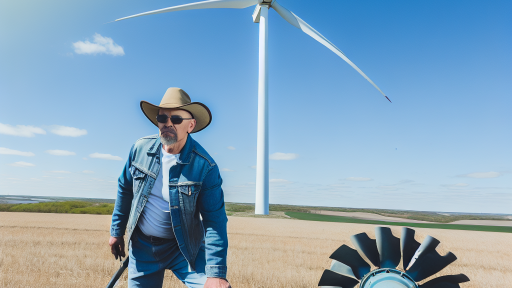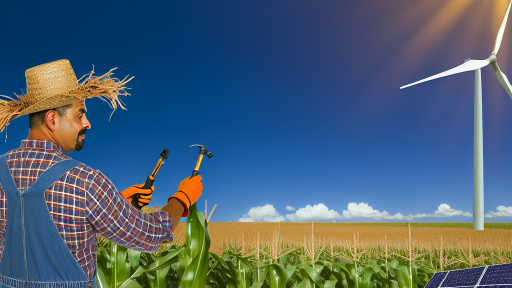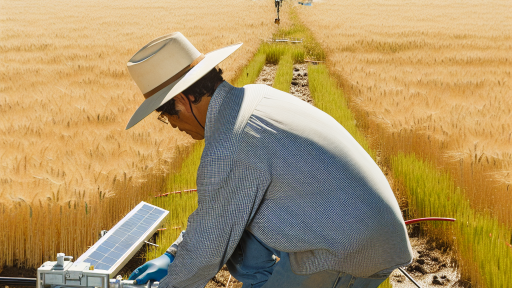Understanding the Role of Livestock Farming in Greenhouse Gas Emissions
Current Impact of Livestock Farming
Livestock farming significantly contributes to greenhouse gas emissions.
This sector generates around 14.5% of global emissions.
Methane, a potent greenhouse gas, is produced during digestion.
Responsible practices can mitigate these emissions effectively.
Types of Emissions from Livestock
Two major types of emissions arise from livestock farming.
These include methane during digestion and nitrous oxide from manure.
Both gases have a far greater warming potential than CO2.
Thus, addressing these emissions is essential for climate action.
Role of Natural Resources
Livestock farming relies heavily on natural resources.
Land and water use are significant factors in emissions.
Overgrazing can lead to deforestation and soil degradation.
Improving land management practices can reduce these impacts.
Strategies for Emission Reduction
Implementing specific strategies can lower greenhouse gas emissions.
- Improving animal diets to enhance digestion efficiency.
- Implementing better manure management practices.
- Using sustainable grazing techniques to protect land.
- Incorporating agroforestry to sequester carbon.
Farmers can adopt these approaches to make significant changes.
Supporting research and innovation will help reduce emissions in the long run.
Transform Your Agribusiness
Unlock your farm's potential with expert advice tailored to your needs. Get actionable steps that drive real results.
Get StartedAssessing the Impact of Different Livestock Species on Environmental Footprint
Understanding Greenhouse Gas Emissions
Greenhouse gas emissions vary significantly among livestock species.
Therefore, understanding these differences is crucial for effective management.
For instance, ruminants like cattle emit more methane compared to other livestock.
This methane predominantly comes from digestion processes.
Conversely, poultry and swine produce lower levels of greenhouse gases.
Optimizing livestock selection can help reduce overall emissions.
Evaluating Ruminants
Ruminants such as cattle, sheep, and goats have unique environmental impacts.
They play a critical role in many agricultural systems.
However, their methane emissions present challenges for climate goals.
Efforts to enhance feed efficiency can mitigate these emissions.
Moreover, integrating sustainable grazing practices can yield benefits.
Analyzing Monogastric Animals
Monogastric species like pigs and chickens typically produce fewer emissions.
These animals have a different digestive system that reduces methane output.
Furthermore, optimizing feed formulation can enhance growth rates.
This can lead to better feed conversion efficiency.
Consequently, farmers can minimize greenhouse gas emissions effectively.
Impact of Aquaculture
Aquaculture offers sustainable alternatives with lower land usage.
Fish generally produce fewer greenhouse gases per kilogram of protein.
Using sustainable feed sources can further improve their environmental profile.
However, the sourcing of feed ingredients should be carefully managed.
This ensures that aquaculture remains an environmentally friendly option.
Comparative Emissions: A Summary
- Ruminants contribute significantly to methane emissions.
- Monogastric animals have a lower overall footprint.
- Aquaculture can serve as a climate-friendly protein source.
Ultimately, the choice of livestock species plays a pivotal role in environmental footprint.
Innovative Feeding Strategies to Reduce Methane Emissions in Ruminants
Understanding the Problem
Methane emissions are a significant issue in livestock farming.
Ruminants, including cows and sheep, produce methane during digestion.
Showcase Your Farming Business
Publish your professional farming services profile on our blog for a one-time fee of $200 and reach a dedicated audience of farmers and agribusiness owners.
Publish Your ProfileThis process affects the environment by increasing greenhouse gases.
Therefore, finding solutions is crucial for sustainable farming practices.
Alternative Feed Ingredients
Introducing alternative feed ingredients can significantly reduce methane emissions.
Seaweed, specifically Asparagopsis taxiformis, demonstrates promising results.
Research shows that seaweed can cut methane emissions by over 80 percent in ruminants.
Other alternatives include high-quality forages and grains.
These replacements can improve digestion and nutrient absorption.
Supplementation with Tannins
Tannin-rich plants can serve as effective supplements in livestock diets.
These compounds reduce methane production during fermentation.
For instance, the use of quebracho and chestnut tannins shows potential.
Integrating tannins into ruminant diets can enhance feed efficiency.
This leads to lower methane emissions and improved animal performance.
Improved Feeding Practices
Adjusting feeding practices can also mitigate methane output.
Strategies include offering smaller, more frequent meals throughout the day.
This method promotes better digestion and reduces fermentation time.
Additionally, incorporating precision feeding techniques can optimize nutrient intake.
Precision feeding tailors diets to meet exact animal needs, reducing waste.
Behavioral Interventions
Behavioral interventions can enhance livestock management.
For example, providing a stress-free environment supports healthier digestion.
Stress negatively impacts rumen health, leading to increased methane emission.
Improving animal welfare can therefore result in lower greenhouse gas output.
Monitoring and Adjusting Strategies
Regular monitoring of methane emissions is essential.
Farmers should assess the effectiveness of implemented strategies.
Using tools like methane measurement devices can help track progress.
Adjusting feeding strategies based on data leads to continuous improvement.
Effective monitoring enhances sustainability practices on the farm.
Explore Further: Climate-Smart Livestock Management for Farmers
The Importance of Manure Management for Lowering Carbon Footprint
Understanding Manure Management
Effective manure management is essential in modern livestock farming.
It can significantly reduce greenhouse gas emissions.
Farmers should adopt best practices for maintaining manure.
This approach enhances soil fertility while lowering pollution.
Key Practices in Manure Management
Proper storage of manure is vital to reduce odor and runoff.
Covering manure piles prevents nutrient loss and emissions.
Regularly composting manure encourages microbial activity.
Composting also leads to a nutrient-rich soil amendment.
- Use of anaerobic digesters captures methane for energy.
- Implementing rotational grazing disperses manure evenly.
- Testing manure nutrients helps optimize crop use.
Benefits of Effective Manure Management
Improved manure practices lead to healthier soil ecosystems.
They also enhance overall farm productivity.
Farmers can experience cost savings by recycling nutrients.
Ultimately, this contributes to sustainable farming efforts.
Collaborative Approaches
Collaboration with agricultural experts can provide insights.
Showcase Your Farming Business
Publish your professional farming services profile on our blog for a one-time fee of $200 and reach a dedicated audience of farmers and agribusiness owners.
Publish Your ProfileWorkshops can educate farmers on sustainable practices.
Sharing successful methods can benefit the entire farming community.
These efforts also promote environmental stewardship.
You Might Also Like: Rainwater Harvesting Tips for Enhanced Farm Water Use
Exploring Agroforestry as a Solution for Sustainable Livestock Farming
Introduction to Agroforestry
Agroforestry integrates agriculture and forestry practices.
This method combines crops and livestock with trees and shrubs.
Farmers can enhance land productivity through this system.
Additionally, agroforestry contributes to biodiversity preservation.
Benefits of Agroforestry in Livestock Farming
Agroforestry offers numerous advantages for livestock farmers.
It reduces the need for artificial fertilizers and pesticides.
Furthermore, it improves soil structure and health.
This practice enhances carbon sequestration in the environment.
Moreover, agroforestry can provide shade and shelter for animals.
Implementing Agroforestry Practices
Integrating trees into grazing land involves several strategies.
Farmers can plant fruit-bearing trees alongside pasture land.
This provides additional food sources for livestock.
Furthermore, rotational grazing can boost land recovery.
It allows for the sustainable use of resources over time.
Real-Life Examples of Successful Agroforestry
Several farms have successfully implemented agroforestry systems.
The Greenfield Farm utilizes live fencing with trees.
This method protects crops and improves animal welfare.
Another example is Maple Grove Ranch, which integrates fruit trees.
They experience healthier livestock and increased profits.
Challenges and Considerations
Despite its benefits, some challenges exist in agroforestry.
Farmers may face difficulties in initial setup and management.
Additionally, knowledge about agroforestry practices is essential.
Support from local agricultural agencies can facilitate adoption.
Education and training programs can enhance success rates.
See Related Content: How to Adapt Crops for a Changing Climate
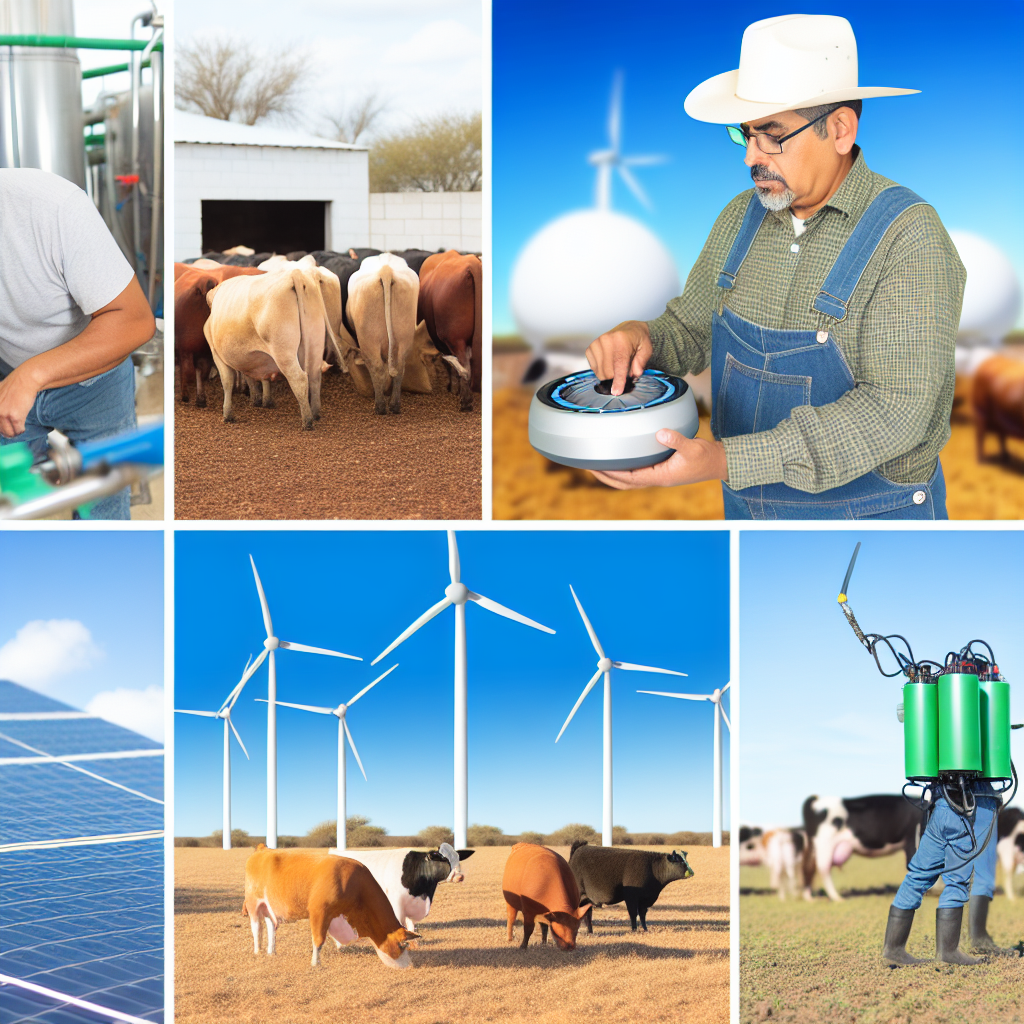
Technological Advancements in Livestock Farming
Overview of Modern Techniques
Livestock farming has evolved significantly in recent years.
Innovative technologies are transforming traditional practices.
These advancements help reduce greenhouse gas emissions effectively.
Precision Livestock Farming
Precision livestock farming utilizes data to enhance animal management.
This technique relies on sensors and monitoring systems.
Farmers can track livestock health and nutrition in real-time.
As a result, they can optimize feed efficiency and minimize waste.
Remote Sensing Technologies
Remote sensing technologies play a crucial role in monitoring livestock.
Drones and satellites provide valuable data regarding pasture conditions.
Additionally, farmers can assess forage availability quickly.
This information allows for better resource allocation and management.
Showcase Your Farming Business
Publish your professional farming services profile on our blog for a one-time fee of $200 and reach a dedicated audience of farmers and agribusiness owners.
Publish Your ProfileHealth Monitoring Systems
Health monitoring systems are vital for livestock welfare.
Wearable devices track vital signs and behavioral patterns.
Identifying health issues early reduces the need for antibiotics.
This approach ultimately lowers emissions related to animal treatment.
Innovative Feed Strategies
Feed strategies directly influence greenhouse gas emissions.
Using high-quality feed enhances digestion and nutrient absorption.
For example, adding seaweed to feed has shown promising results.
Studies indicate that it can reduce methane emissions significantly.
Alternative Protein Sources
Alternative protein sources are gaining popularity in livestock feed.
Insects and lab-grown proteins offer sustainable options.
These alternatives require less land and water to produce.
Furthermore, they generate fewer emissions compared to traditional feeds.
Feed Additives
Feed additives also play a significant role in emission reduction.
Compounds like tannins and essential oils can improve gut health.
Enhanced gut health leads to better nutrient utilization.
This improvement translates to lower methane production.
Precision Breeding Techniques
Precision breeding techniques enhance the genetic traits of livestock.
By selecting for traits that improve feed efficiency, farmers can reduce emissions.
Genetic modifications are increasingly becoming mainstream.
These practices promote resilience and lower environmental impact.
Genomic Selection
Genomic selection uses DNA testing to make informed breeding decisions.
This approach accelerates the breeding process for desirable traits.
Farmers can produce animals that grow faster and use resources efficiently.
Behavioral Selection
Behavioral selection focuses on traits that promote animal welfare.
Stress-reduced animals often produce fewer emissions.
Farmers can achieve this through selective breeding and proper management.
Digital Platforms for Efficiency
Digital platforms are transforming livestock management practices.
Cloud-based solutions help farmers track data and make informed decisions.
These tools integrate various aspects of farm management seamlessly.
Data Analytics
Data analytics provides insights into farm performance trends.
Farmers can identify inefficiencies and adjust strategies accordingly.
Using analytics, they can improve productivity and reduce waste.
Blockchain Technology
Blockchain technology enhances traceability in livestock supply chains.
It helps ensure sustainability and ethical practices.
Transparency in supply chains leads to better resource utilization.
See Related Content: Boost Farm Sustainability with Carbon Sequestration
Policy Frameworks and Incentives for Eco-Friendly Livestock Practices
Importance of Policy Frameworks
Policy frameworks play a vital role in promoting eco-friendly livestock practices.
They create guidelines for farmers to follow sustainable methods.
Furthermore, these frameworks encourage investments in green technologies.
Effective policies can reduce greenhouse gas emissions significantly.
Showcase Your Farming Business
Publish your professional farming services profile on our blog for a one-time fee of $200 and reach a dedicated audience of farmers and agribusiness owners.
Publish Your ProfileIn addition, they can enhance animal welfare standards.
Types of Government Incentives
Governments offer various incentives to support eco-friendly farming.
These incentives can include financial assistance and tax breaks.
Additionally, grants for sustainable farming projects are available.
In some cases, low-interest loans may also be offered.
These resources often help cover costs for technology upgrades.
Collaboration with Industry Stakeholders
Collaboration between government and industry stakeholders is essential.
These partnerships can foster the sharing of best practices.
Working together leads to innovation in livestock management.
Moreover, stakeholders can provide valuable feedback for policy improvements.
Such collaboration also creates awareness about sustainability issues.
Case Studies of Successful Implementation
Several case studies highlight successful policy implementations.
For instance, Denmark has made significant strides in reducing emissions.
A comprehensive strategy was developed to promote sustainable methods.
Similarly, New Zealand has established programs supporting farmers.
These programs focus on nutrient management and waste reduction.
Future Directions and Recommendations
The future of eco-friendly livestock farming looks promising.
Continuous evaluation and adaptation of policies are necessary.
Moreover, increasing public awareness about sustainability will help.
Engaging educational institutions can also pave the way for innovation.
Lastly, fostering international cooperation can amplify efforts.
Case Studies: Successful Livestock Farms Reducing Greenhouse Gas Outputs
Innovative Grazing Techniques
Green Pastures Farm in Oregon implemented rotational grazing practices.
This method promotes healthier soil and reduces methane emissions.
As a result, the farm noticed a 30% decrease in greenhouse gas output within two years.
Moreover, healthier livestock contribute to improved meat quality.
Integrated Crop-Livestock Systems
Cedar Creek Farms in Iowa adopted an integrated system combining crop and livestock production.
This strategy utilizes livestock manure as natural fertilizer for crops.
Consequently, the farm cut its fertilizer costs by 25% and reduced its carbon footprint.
Additionally, they improved overall soil health and crop yields.
Adoption of Technology
Hillside Ranch in Texas invested in precision agriculture technology.
This technology helps farmers track livestock health and environmental conditions.
By analyzing data, they optimized feed efficiency, reducing methane emissions significantly.
Technology also enables better land management and resource allocation.
Alternative Feed Sources
Sunnyvale Ranch in Colorado introduced seaweed-based supplements for cattle.
This innovative approach has decreased methane production by up to 80%.
Furthermore, the livestock show improved overall health and performance.
Farmers report enhanced profitability due to increased feed efficiency.
Community Collaboration
Community Farms in Vermont relies on partnerships with local organizations.
They received support in adopting sustainable practices tailored for local conditions.
This collaboration led to shared resources and innovative training programs.
Showcase Your Farming Business
Publish your professional farming services profile on our blog for a one-time fee of $200 and reach a dedicated audience of farmers and agribusiness owners.
Publish Your ProfileThe community approach has helped reduce emissions across multiple farms.

